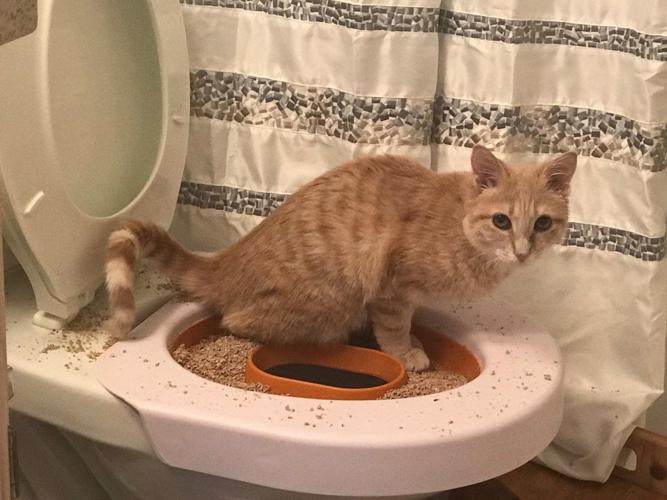Prevent Clogs and Damage: Don't Flush Cat Poop Down Your Toilet - Expert Insights
Prevent Clogs and Damage: Don't Flush Cat Poop Down Your Toilet - Expert Insights
Blog Article
We have discovered this article pertaining to How to Dispose of Cat Poop and Litter Without Plastic Bags listed below on the net and thought it made perfect sense to relate it with you over here.

Intro
As pet cat owners, it's vital to bear in mind how we dispose of our feline close friends' waste. While it may appear hassle-free to flush cat poop down the bathroom, this method can have damaging effects for both the setting and human wellness.
Ecological Impact
Purging pet cat poop presents hazardous pathogens and parasites into the water supply, posing a substantial threat to water environments. These pollutants can negatively impact marine life and compromise water top quality.
Health and wellness Risks
In addition to ecological worries, flushing pet cat waste can likewise pose health and wellness threats to people. Cat feces might contain Toxoplasma gondii, a bloodsucker that can cause toxoplasmosis-- a possibly severe ailment, particularly for expectant women and individuals with weakened body immune systems.
Alternatives to Flushing
Thankfully, there are more secure and more accountable means to get rid of pet cat poop. Consider the following options:
1. Scoop and Dispose in Trash
The most typical technique of disposing of cat poop is to scoop it into a naturally degradable bag and toss it in the garbage. Make certain to make use of a committed clutter scoop and get rid of the waste quickly.
2. Use Biodegradable Litter
Select eco-friendly feline trash made from materials such as corn or wheat. These clutters are eco-friendly and can be safely dealt with in the trash.
3. Bury in the Yard
If you have a backyard, take into consideration burying pet cat waste in a designated location far from veggie yards and water resources. Make sure to dig deep enough to prevent contamination of groundwater.
4. Install a Pet Waste Disposal System
Invest in a pet dog garbage disposal system especially developed for cat waste. These systems use enzymes to break down the waste, lowering odor and ecological effect.
Conclusion
Liable animal possession prolongs past offering food and sanctuary-- it likewise entails appropriate waste management. By avoiding flushing feline poop down the commode and choosing different disposal methods, we can reduce our ecological impact and safeguard human health.
Why Can’t I Flush Cat Poop?
It Spreads a Parasite
Cats are frequently infected with a parasite called toxoplasma gondii. The parasite causes an infection called toxoplasmosis. It is usually harmless to cats. The parasite only uses cat poop as a host for its eggs. Otherwise, the cat’s immune system usually keeps the infection at low enough levels to maintain its own health. But it does not stop the develop of eggs. These eggs are tiny and surprisingly tough. They may survive for a year before they begin to grow. But that’s the problem.
Our wastewater system is not designed to deal with toxoplasmosis eggs. Instead, most eggs will flush from your toilet into sewers and wastewater management plants. After the sewage is treated for many other harmful things in it, it is typically released into local rivers, lakes, or oceans. Here, the toxoplasmosis eggs can find new hosts, including starfish, crabs, otters, and many other wildlife. For many, this is a significant risk to their health. Toxoplasmosis can also end up infecting water sources that are important for agriculture, which means our deer, pigs, and sheep can get infected too.
Is There Risk to Humans?
There can be a risk to human life from flushing cat poop down the toilet. If you do so, the parasites from your cat’s poop can end up in shellfish, game animals, or livestock. If this meat is then served raw or undercooked, the people who eat it can get sick.
In fact, according to the CDC, 40 million people in the United States are infected with toxoplasma gondii. They get it from exposure to infected seafood, or from some kind of cat poop contamination, like drinking from a stream that is contaminated or touching anything that has come into contact with cat poop. That includes just cleaning a cat litter box.
Most people who get infected with these parasites will not develop any symptoms. However, for pregnant women or for those with compromised immune systems, the parasite can cause severe health problems.
How to Handle Cat Poop
The best way to handle cat poop is actually to clean the box more often. The eggs that the parasite sheds will not become active until one to five days after the cat poops. That means that if you clean daily, you’re much less likely to come into direct contact with infectious eggs.
That said, always dispose of cat poop in the garbage and not down the toilet. Wash your hands before and after you clean the litter box, and bring the bag of poop right outside to your garbage bins.
https://trenchlesssolutionsusa.com/why-cant-i-flush-cat-poop/

I discovered that entry about Can You Flush Cat Poop Down The Toilet? while perusing the web. Sharing is nice. You just don't know, you might be doing someone a favor. I thank you for reading our article about Can You Flush Cat Poo or Litter Down the Toilet?.
At This Website Report this page